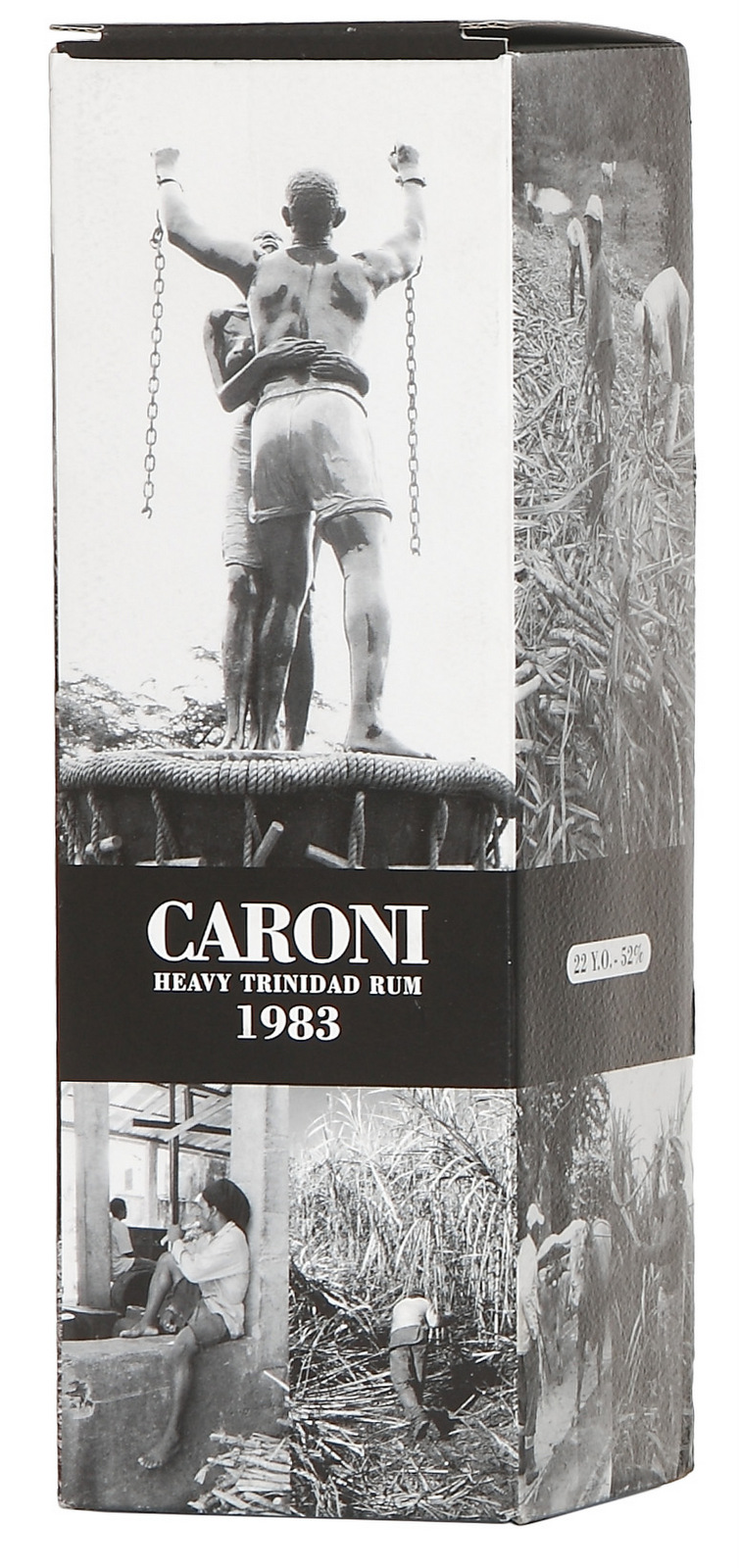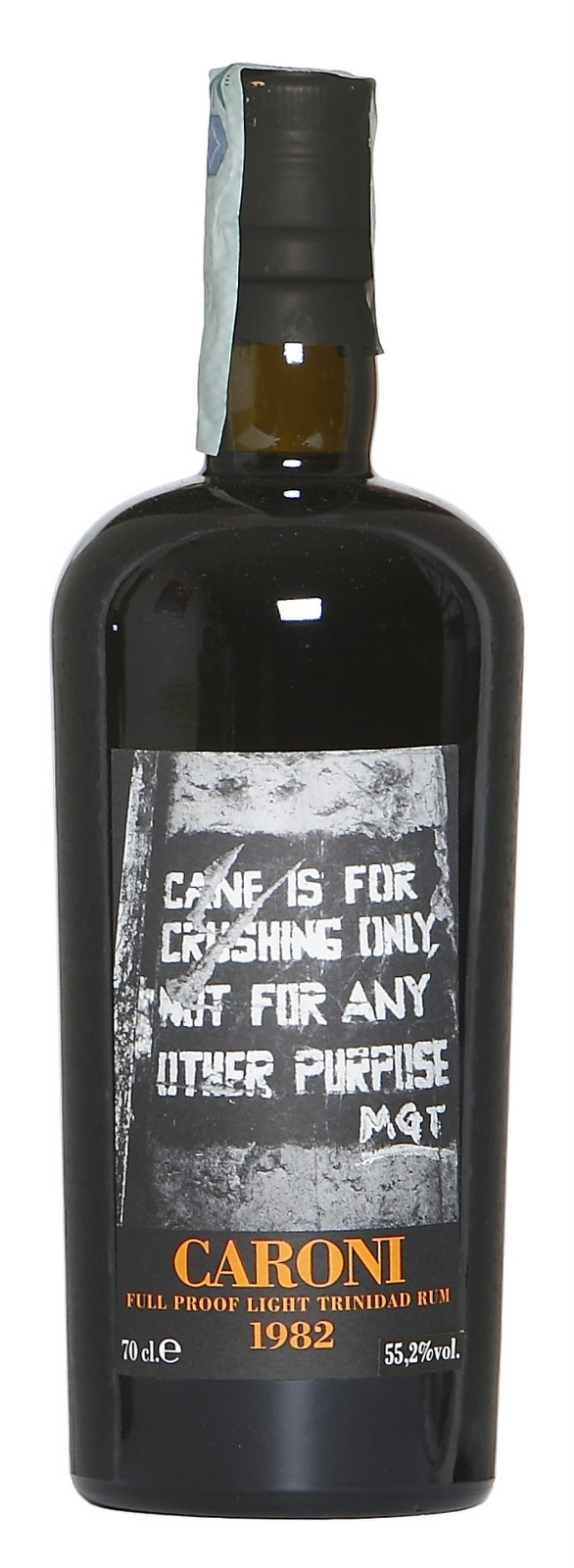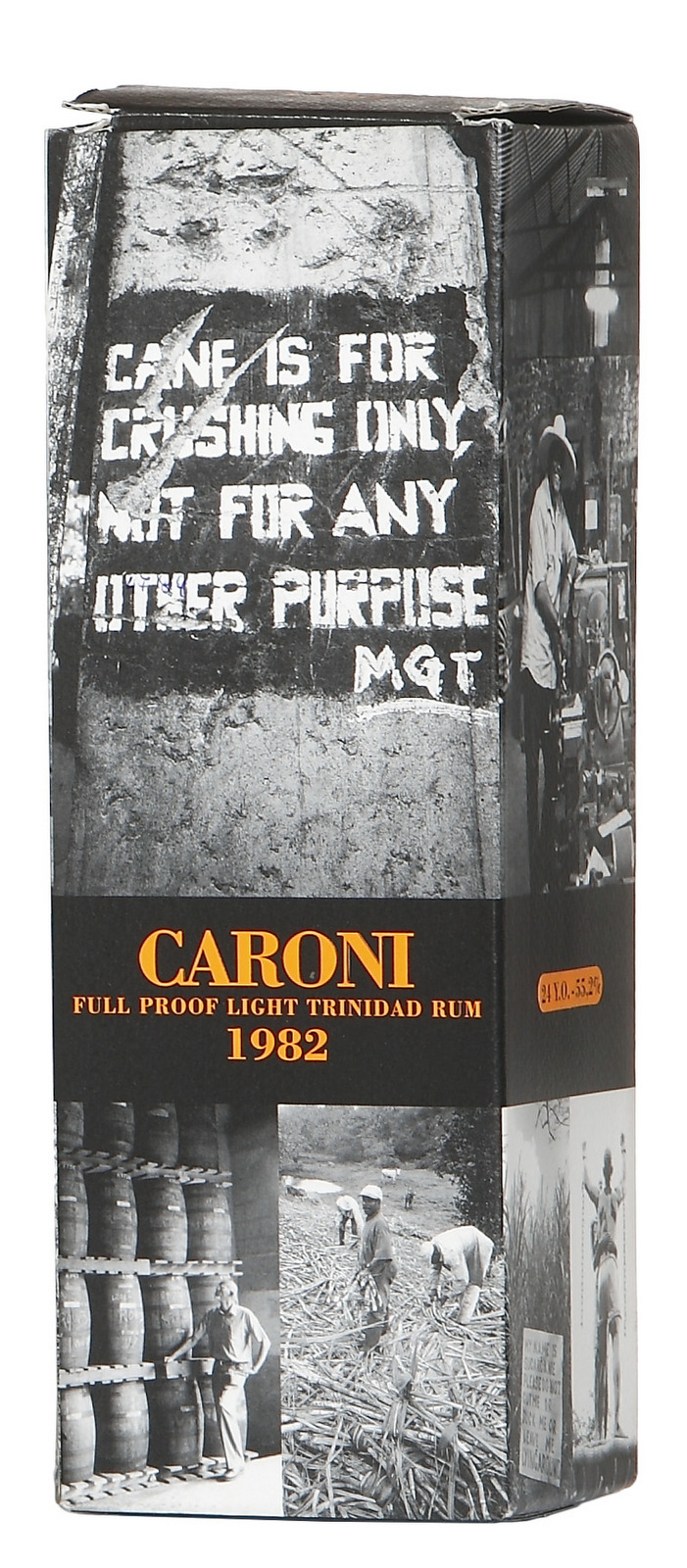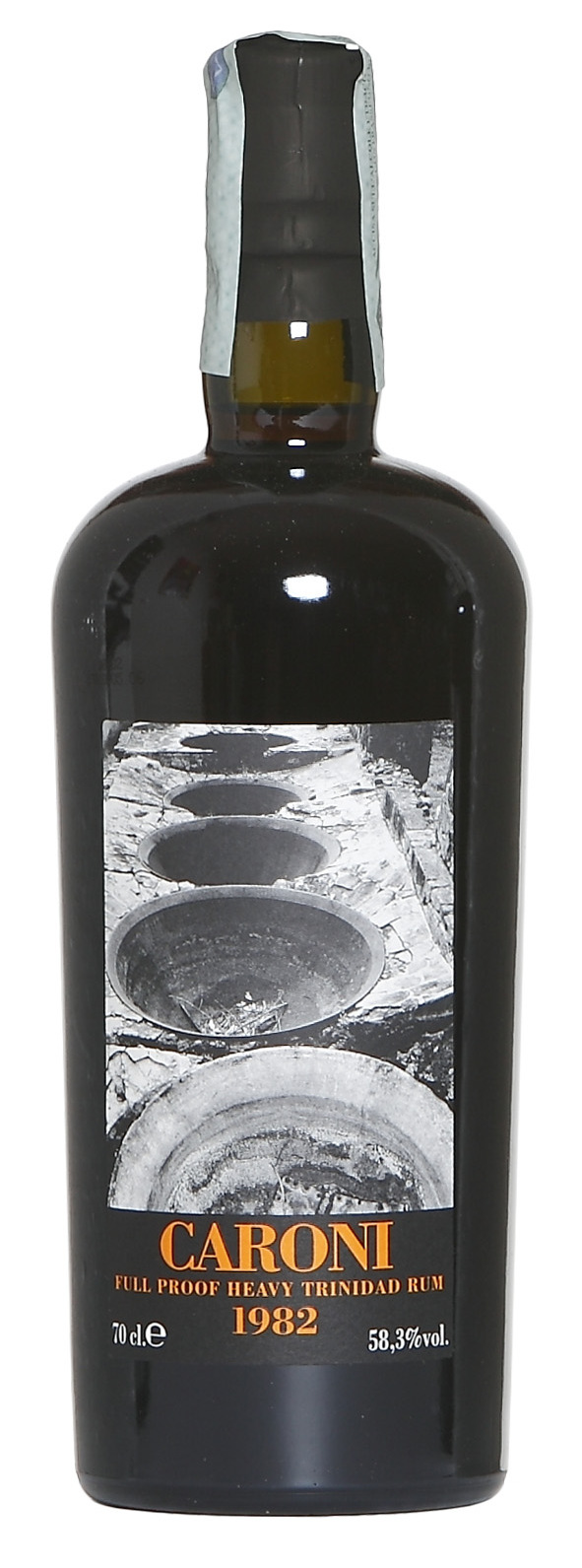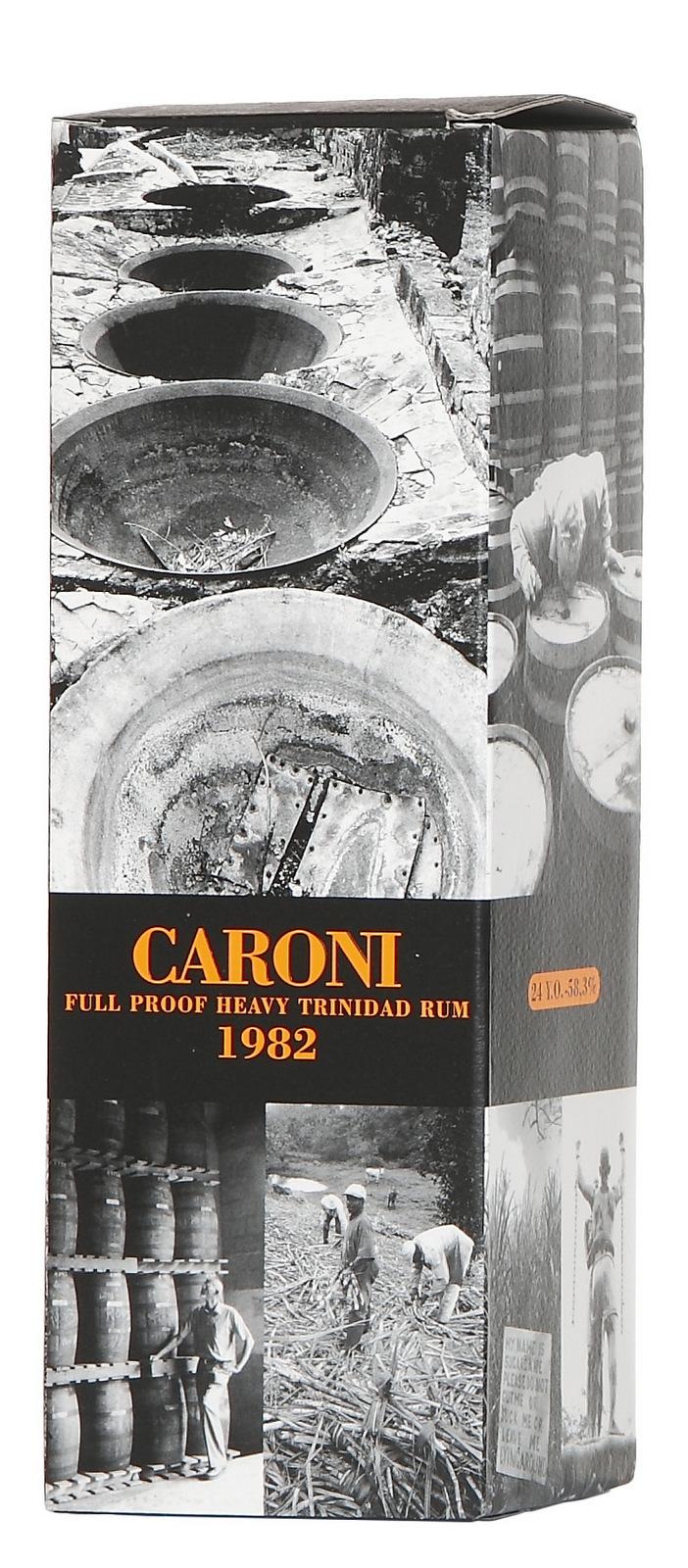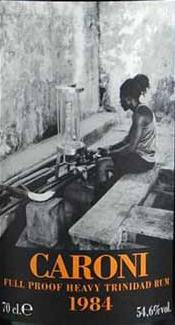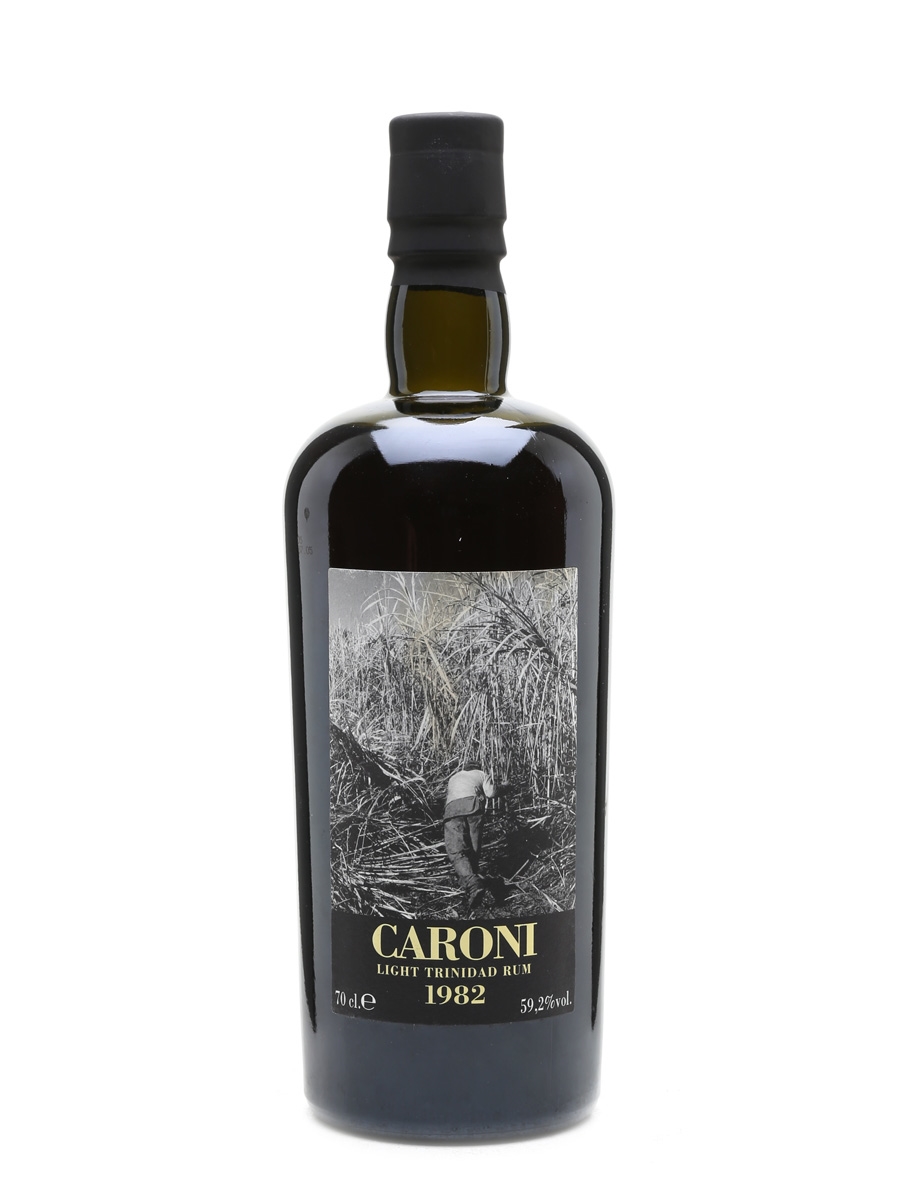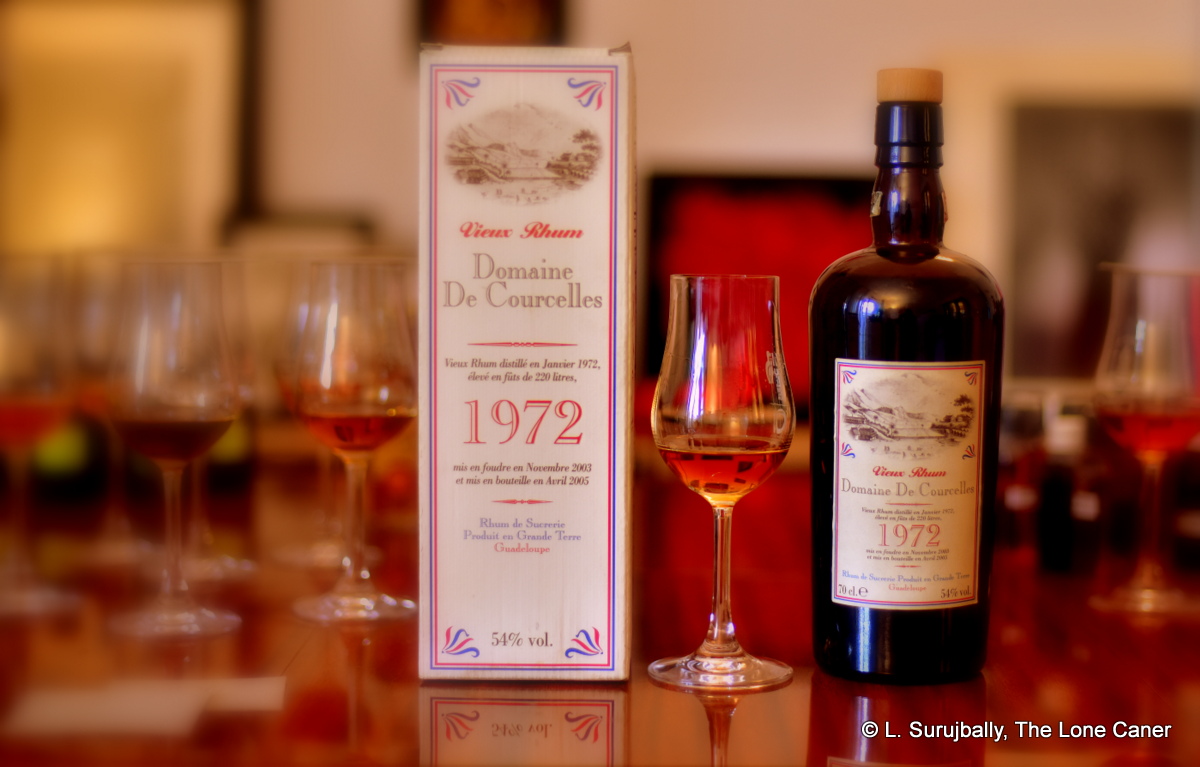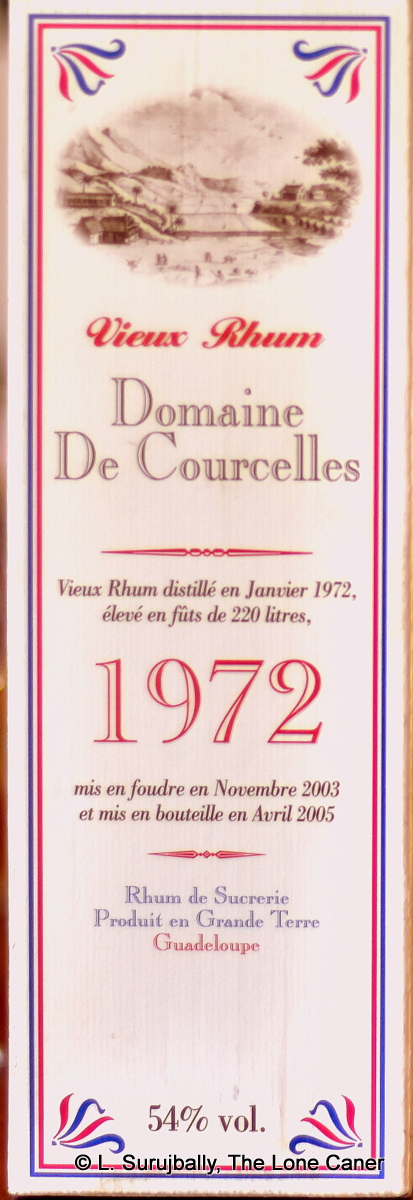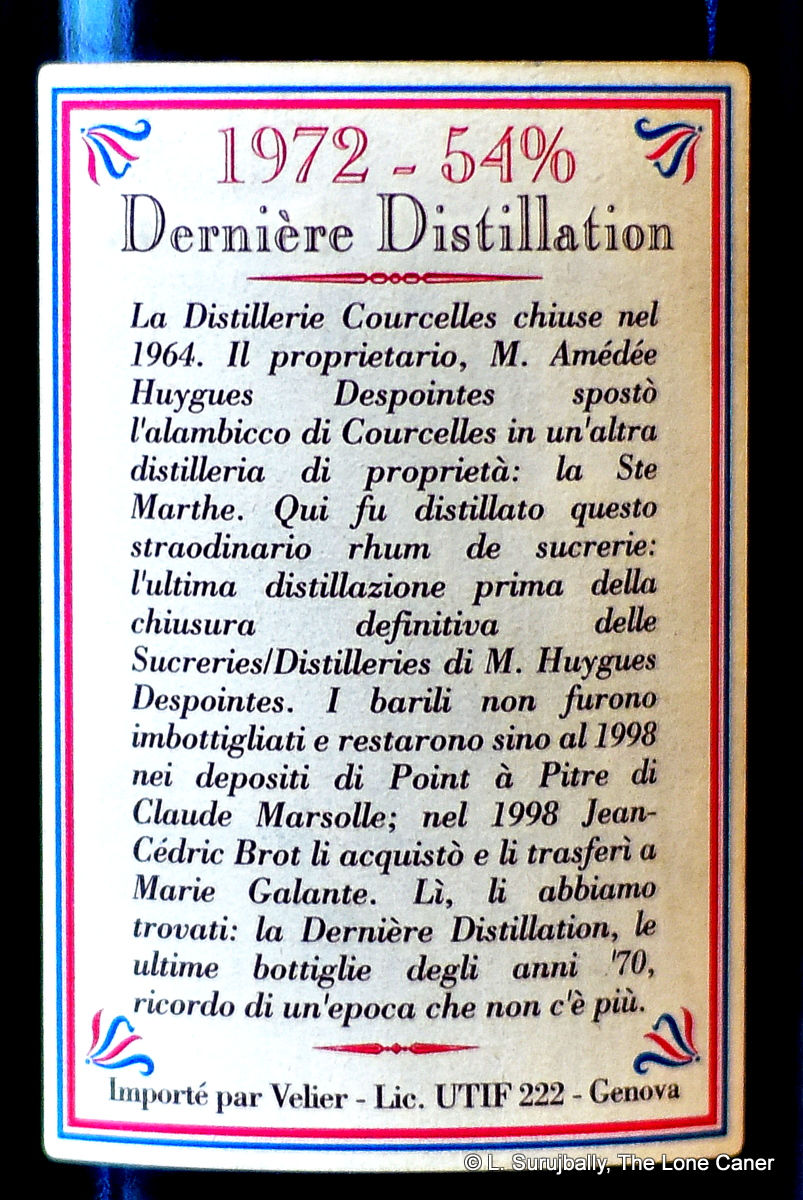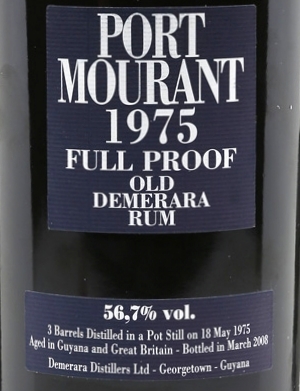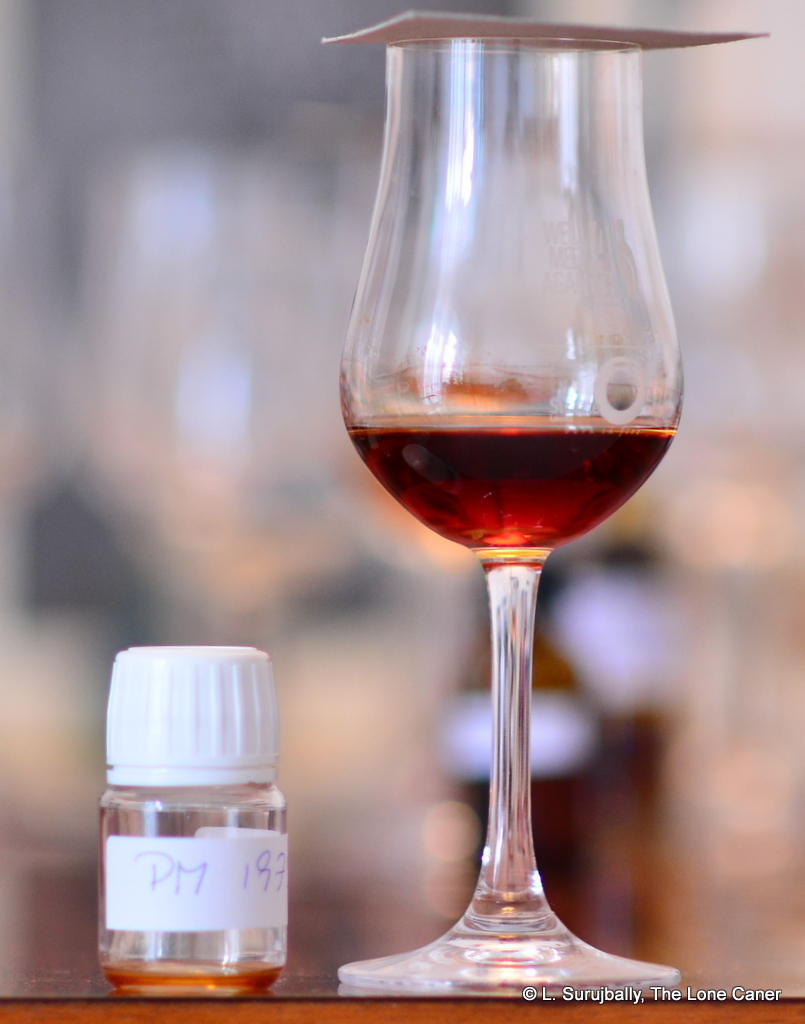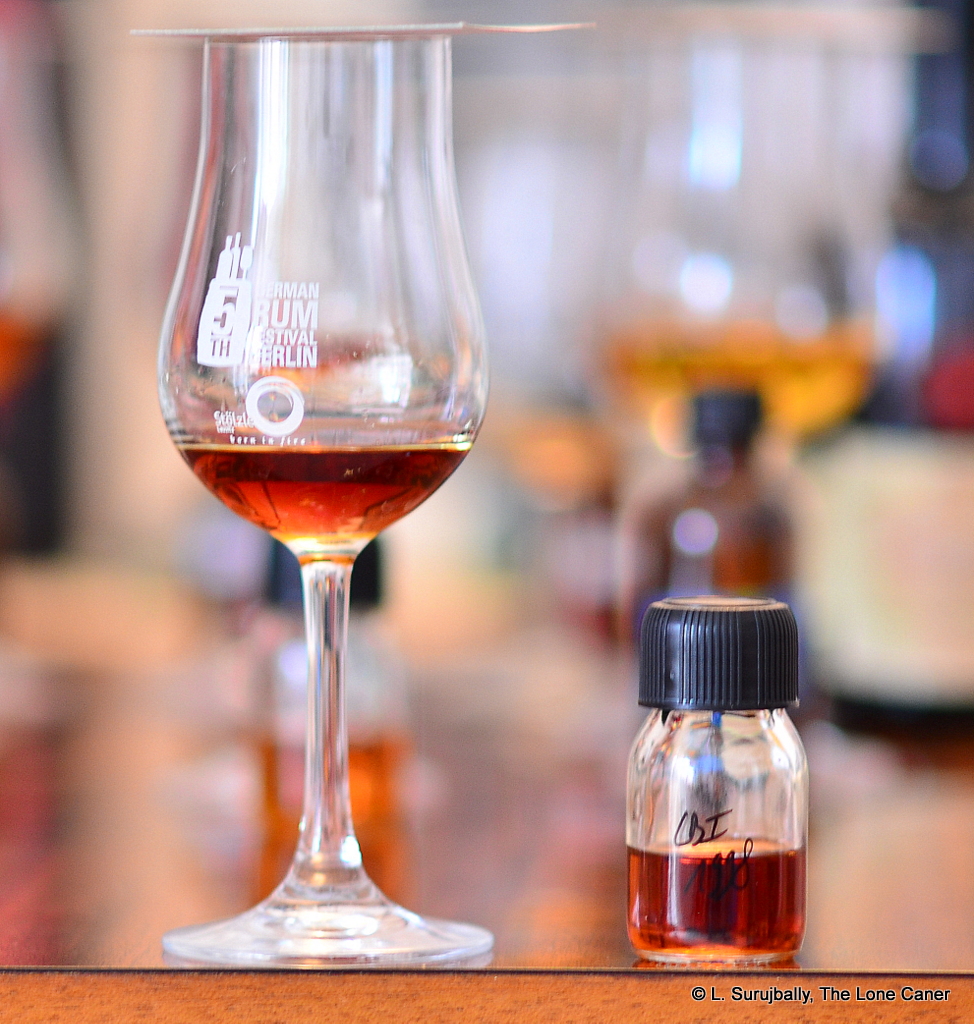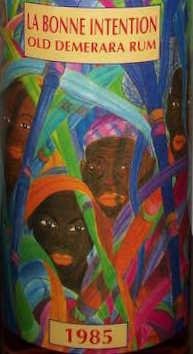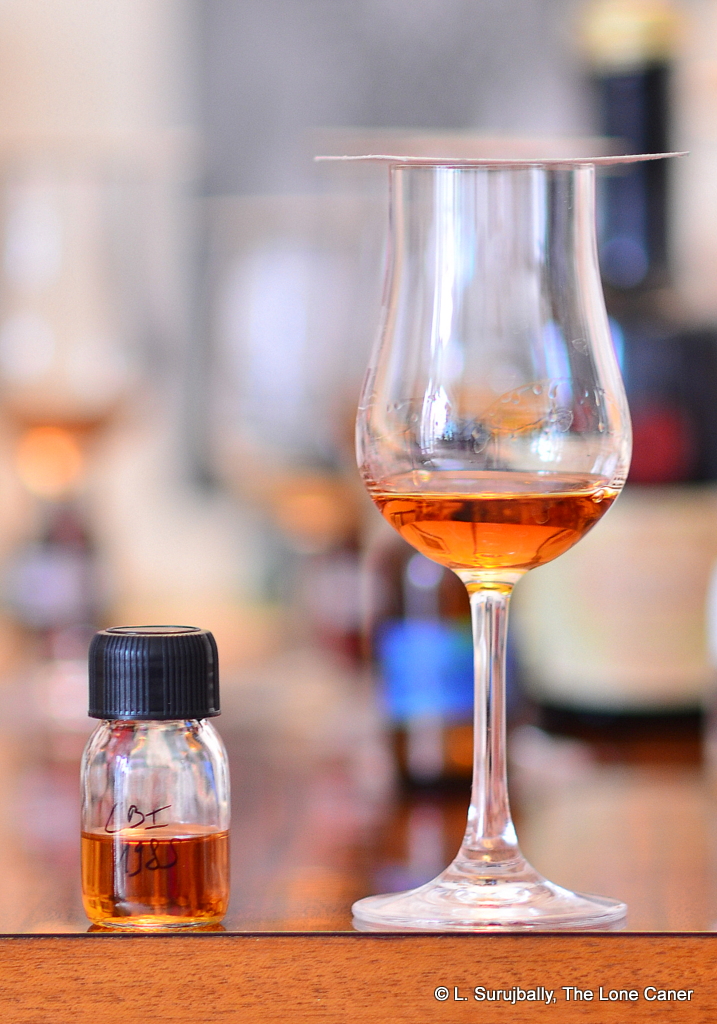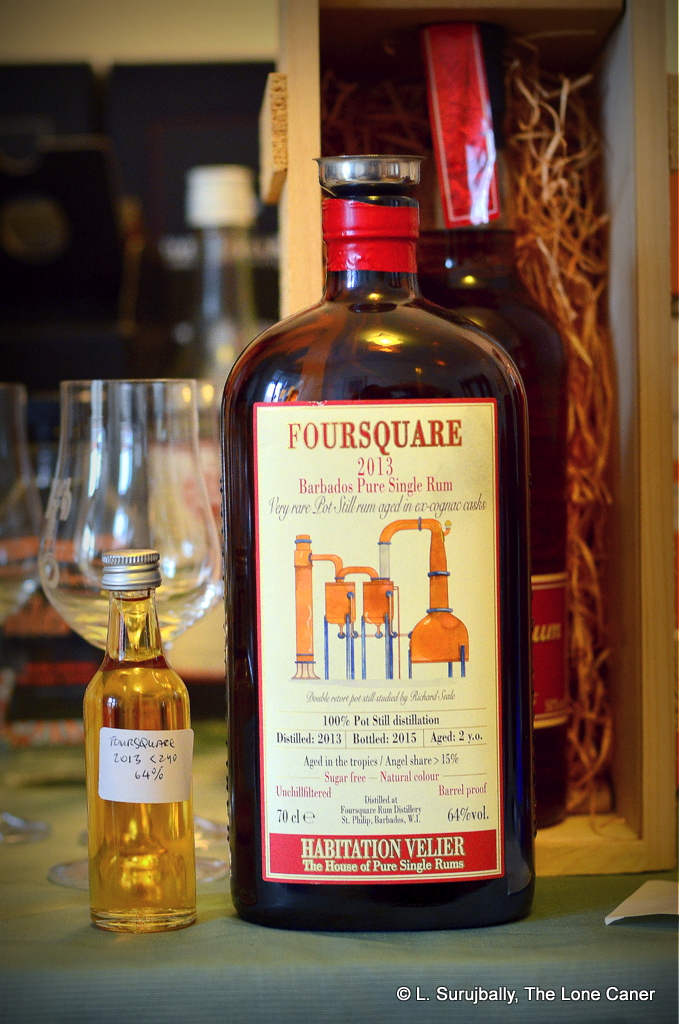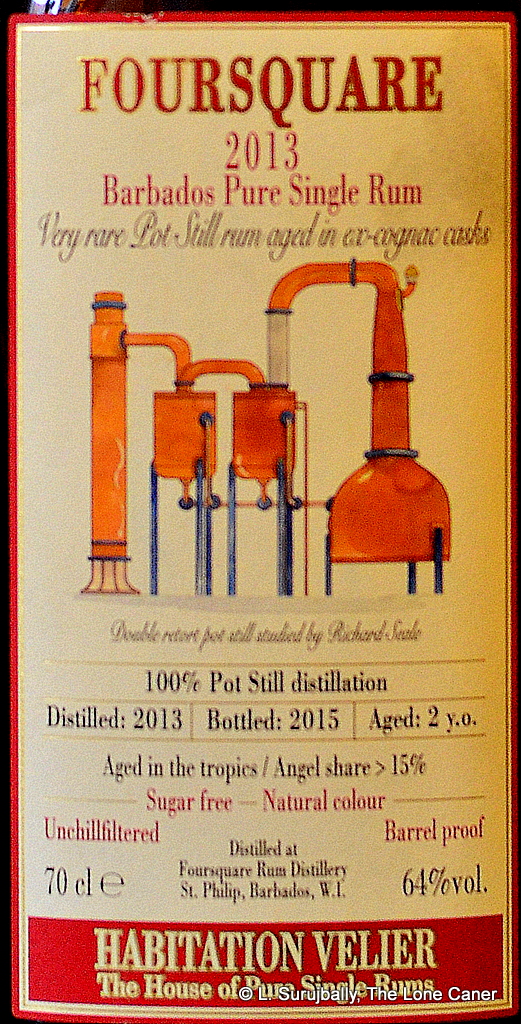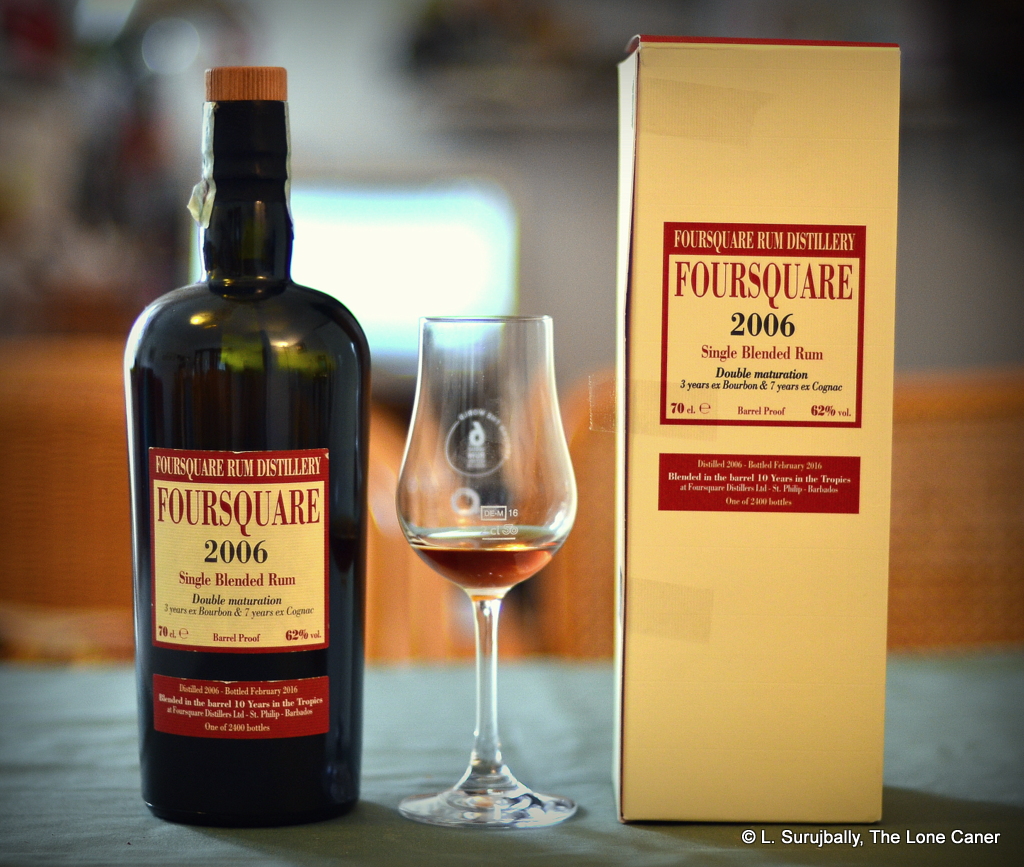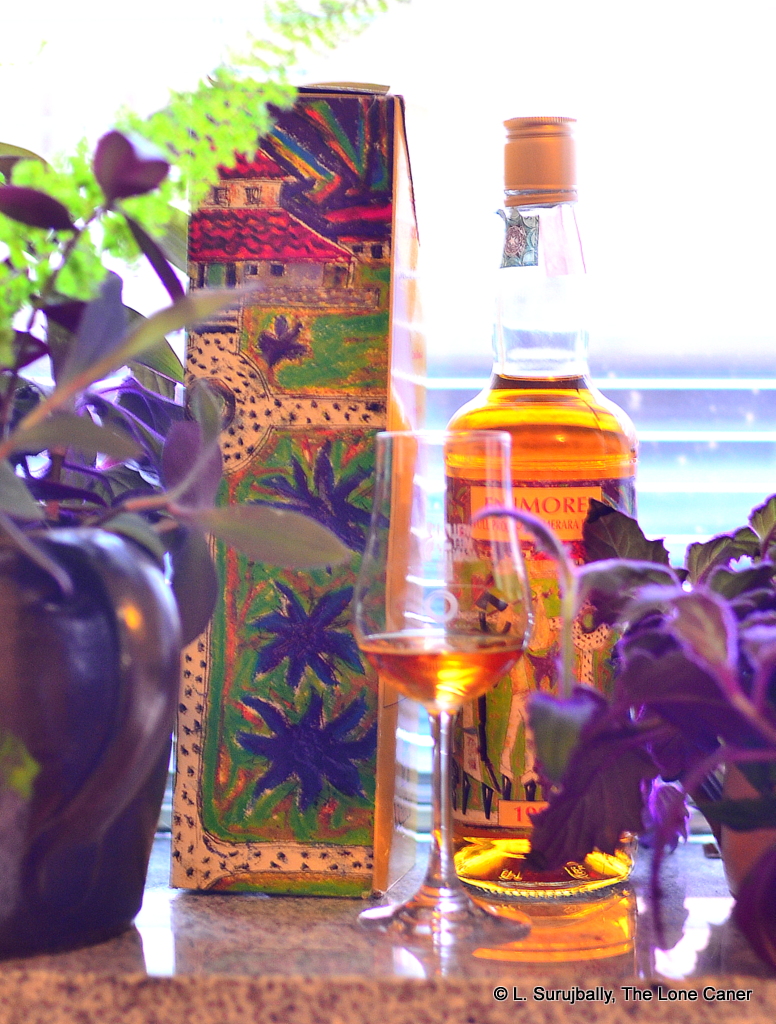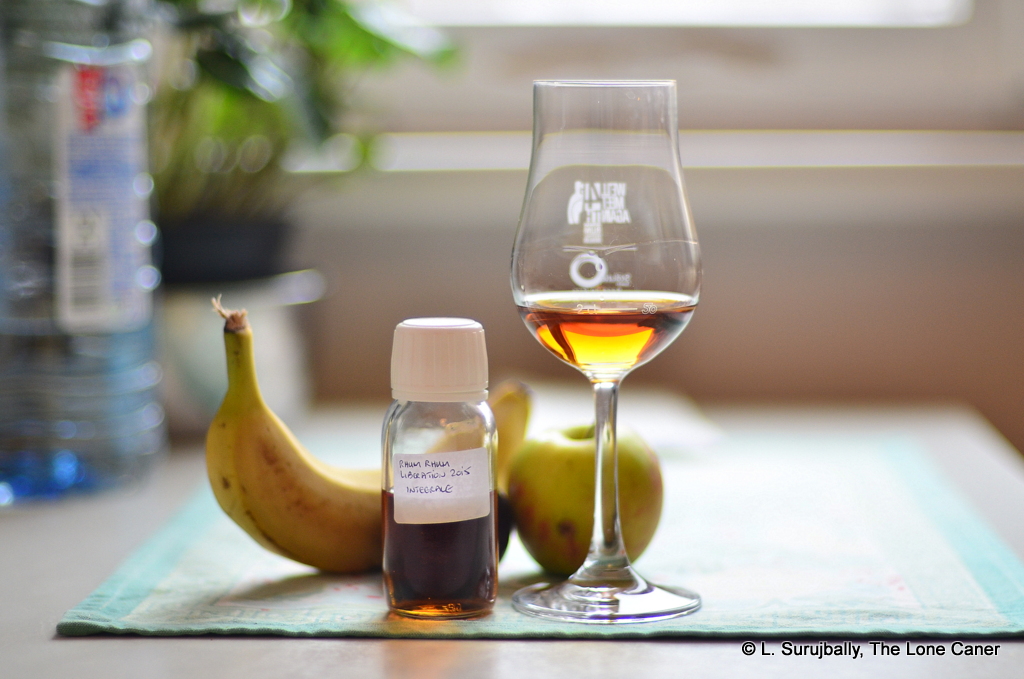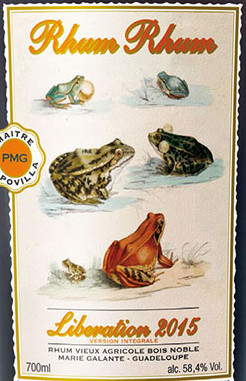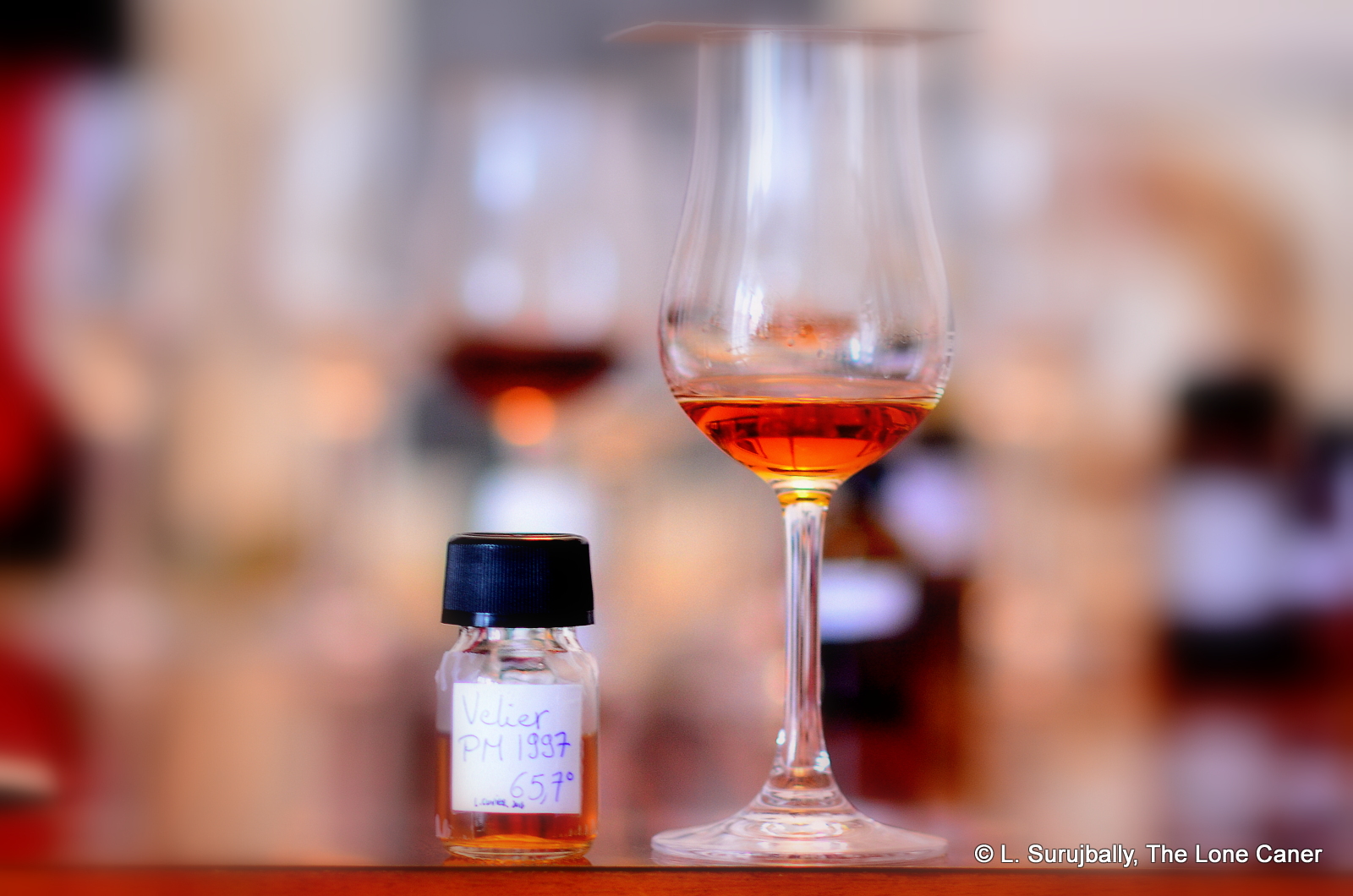
#499
Velier’s 1997 Port Mourant expression announces its presence with the sort of growling distant rumble of an approaching storm system, igniting emotions of awe and amazement (and maybe fear) in the unwary. It’s 65.7% of fast-moving badass, blasting into a tasting session with F5 force, flinging not just bags but whole truckloads of flavour into your face.
You think I’m making this up for effect, right? Nope. The nose, right from the start, even when just cracking the bottle, is ragingly powerful, shot through with lightning flashes of licorice, blueberries, blackberries, off-colour bananas, citrus, pineapple slices in syrup. And as if that wasn’t enough, it apparently decided to include sheeting rainstorms of anise, coffee, cinnamon, ginger, nutmeg…just because, y’know, they were there and it could. It was heavy, but not too much, and it made me think that while the ester-laden Savanna HERR or Hampdens and Worth Parks have similarly intense aromas (however unique to themselves), the darker heavier notes from Port Mourant definitely have their place as well.
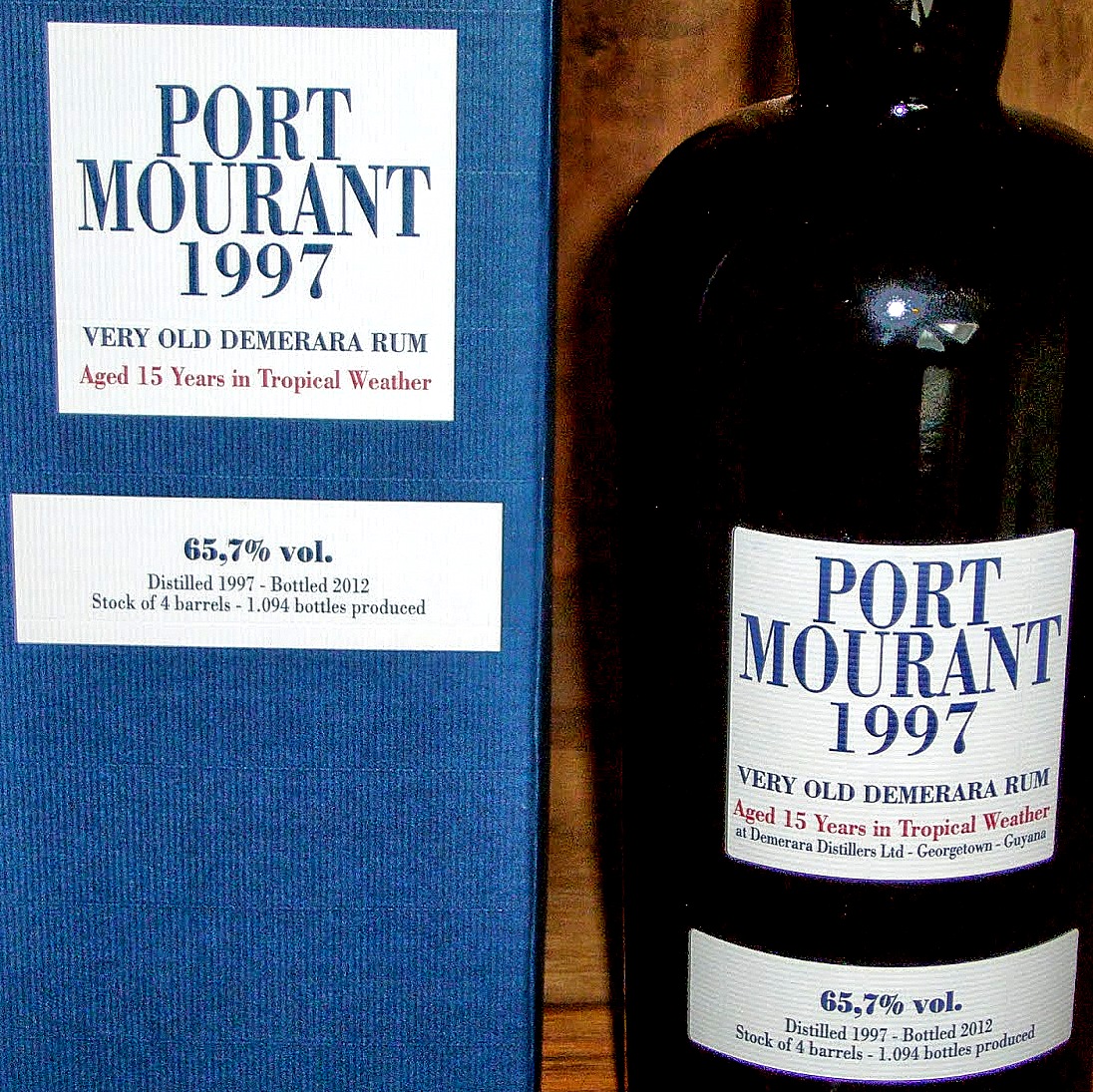
Photo courtesy of Barrel Aged Mind
Physically tasting the rum is an experience in itself, largely because of its weight, its heft, and its tropical intensity – yet amazingly, it’s all controlled and well balanced. It’s hot-just-short-of-sharp, smooth, buttery, dark, licorice-y, caramel-y and coffee-like, and while you’re enjoying that, the additional notes of blackberries, unsweetened black tea, citrus and raisins (and more anise) descend like black clouds casting ominous shadows of oomph all over the labial landscape. The assembly of the vanilla, salt caramel, fruity spices and anise notes of the PM is really quite impressive, with no overarching bite of tannins to mar the experience – they were there, but unlike the El Dorado Rare Collection PM 1999, they kept their distance until the end. And even the finish held up well: it was long, dry, deep, with those heretofore reticent tannins finally making their presence felt,causing the fruits to recede, flowers to step back, and it all stays alive for a very, very long time.
Tropical ageing can’t be faulted when it produces a rum as good as this one. Balance is phenomenal, enjoyment off the scale, and it just doesn’t get much better than that. The endurance of the aromas and tastes hearkens back to the neverending-smell-story of the Skeldon 1973. It’s just about epic, and I mean that. Consider: I had a generous sample of this rum and played with it for some hours; I had dinner; had a bath, brushed my teeth; I went to bed; I woke up; did all the “three-S” morning ablutions, dressed, had coffee, and as I went out the door and got kissed by the wife, she frowned and asked me “What on earth have you been drinking?” Kissed me again. And then, after another sniff. – “And why the hell didn’t you share any?” I’ll drink a rum like that any day of the week. Maybe even twice.
(90/100)
Other notes
- Outturn 1094 bottles. Wooden double pot still. Velier needs no introduction any more, right?
- Compliments to Laurent Cuvier of Poussette fame, for his generous sharing of this gem among rums from the Lost Age of the Demeraras.
- Two Danish squaddies of mine, Nico and Gregers, detailed their own experiences with the PM 1997 in the recent Velier PM Blowout.
- The most detailed review of this I’ve ever seen is Barrel Aged Mind’s 2013 write up (sorry, German only). And if you want to know how far we’ve come, consider that a mere six years ago, he paid 118€ for it.
Postscript
It was instructive to note the reactions to the El Dorado Rare Collection (First Edition) reviews in general, and the Port Mourant 1999 in particular. Many people felt the ED PM took pride of place, variously calling it a flavour bomb of epic proportions, “huge”, “brutal” and “immense”. Clearly the Port Mourant rums have a cachet all their own in the lore of Demeraras; and if one disses them, one had better have good reasons why. Saying so ain’t enough, buddy – state your reasons and make your case, and it had better be a good one.
My rebuttal to why the El Dorado PM got the score it did from me is quite simply, this rum. If you ever manage to get it, try them together and reflect on the difference. Hopefully your mileage doesn’t vary too far from mine, but I honestly think the Velier PM 1997 is the superior product.
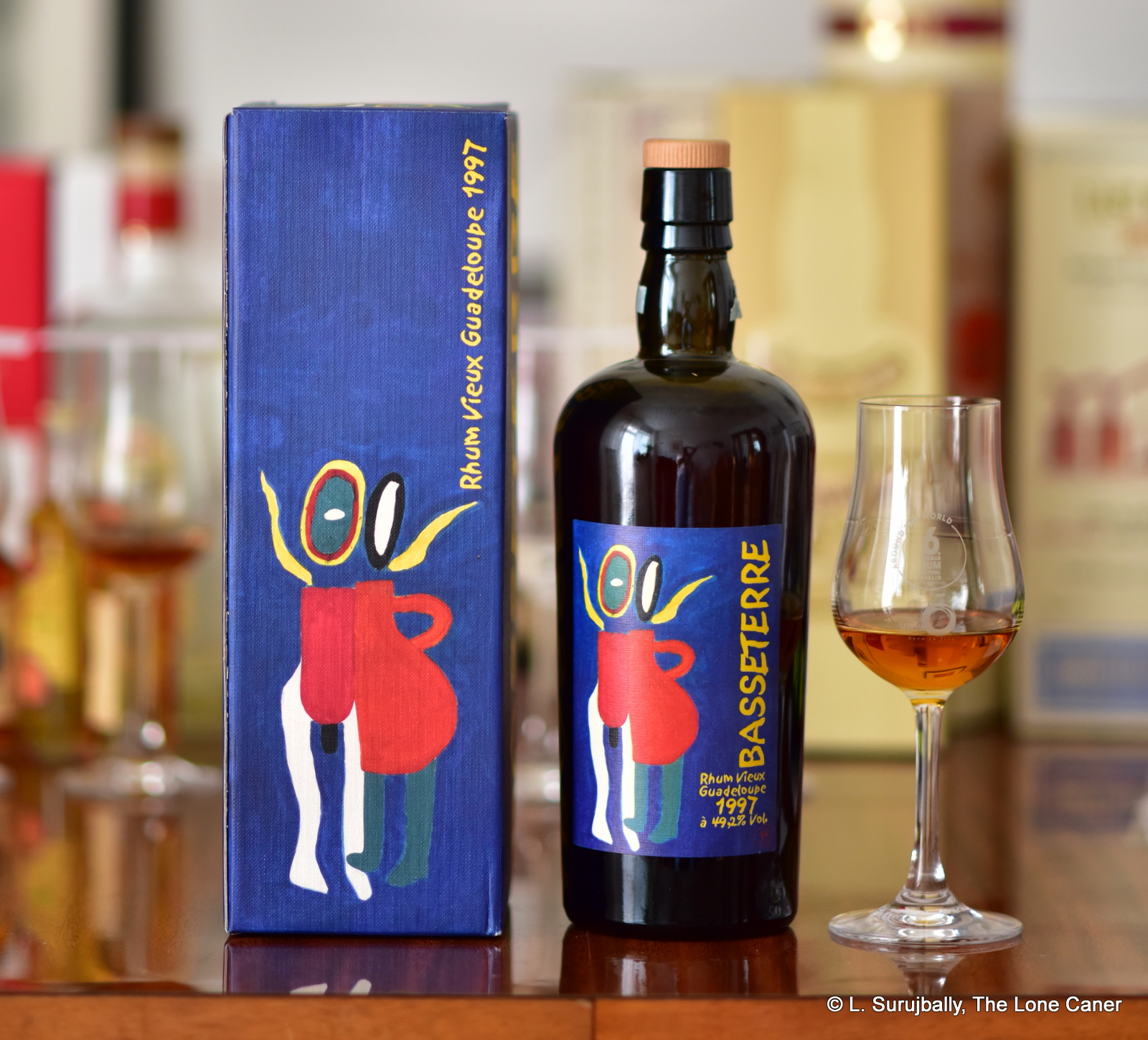
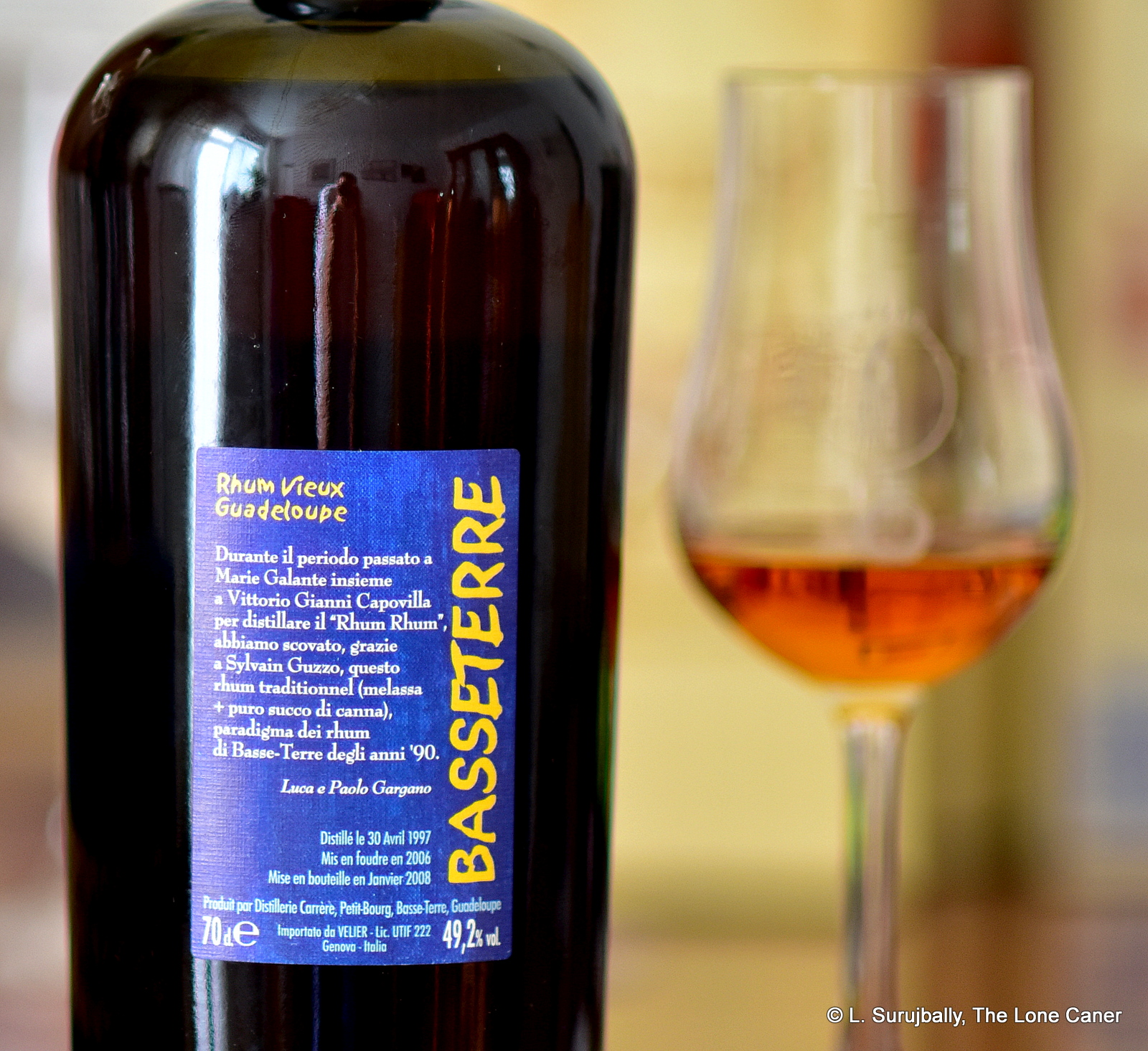 Anecdotes aside, what have we got here? A Guadeloupe column-distilled 49.2% ABV rhum from the Carrere Distillerie more commonly called Montebello, located just a little south of Petit Bourg and in operation since 1930. Curiously, it’s a blend: of rhum agricole (distilled from cane juice) and rhum traditionnel (distilled from molasses). Aged…well, what is the age? It was put in oak in 1997 then taken out of the barrels in 2006 (again, just like the 1997 edition) and placed in an inert vat until 2008 for the two divergent strains to marry. So I’m calling it a nine year old, though one could argue it sat for 11 years even if it was just twiddling its thumbs for two. And as noted above, there’s a reason why Sylvain’s name is on the back label, so now you know pretty much the same story as me.
Anecdotes aside, what have we got here? A Guadeloupe column-distilled 49.2% ABV rhum from the Carrere Distillerie more commonly called Montebello, located just a little south of Petit Bourg and in operation since 1930. Curiously, it’s a blend: of rhum agricole (distilled from cane juice) and rhum traditionnel (distilled from molasses). Aged…well, what is the age? It was put in oak in 1997 then taken out of the barrels in 2006 (again, just like the 1997 edition) and placed in an inert vat until 2008 for the two divergent strains to marry. So I’m calling it a nine year old, though one could argue it sat for 11 years even if it was just twiddling its thumbs for two. And as noted above, there’s a reason why Sylvain’s name is on the back label, so now you know pretty much the same story as me. 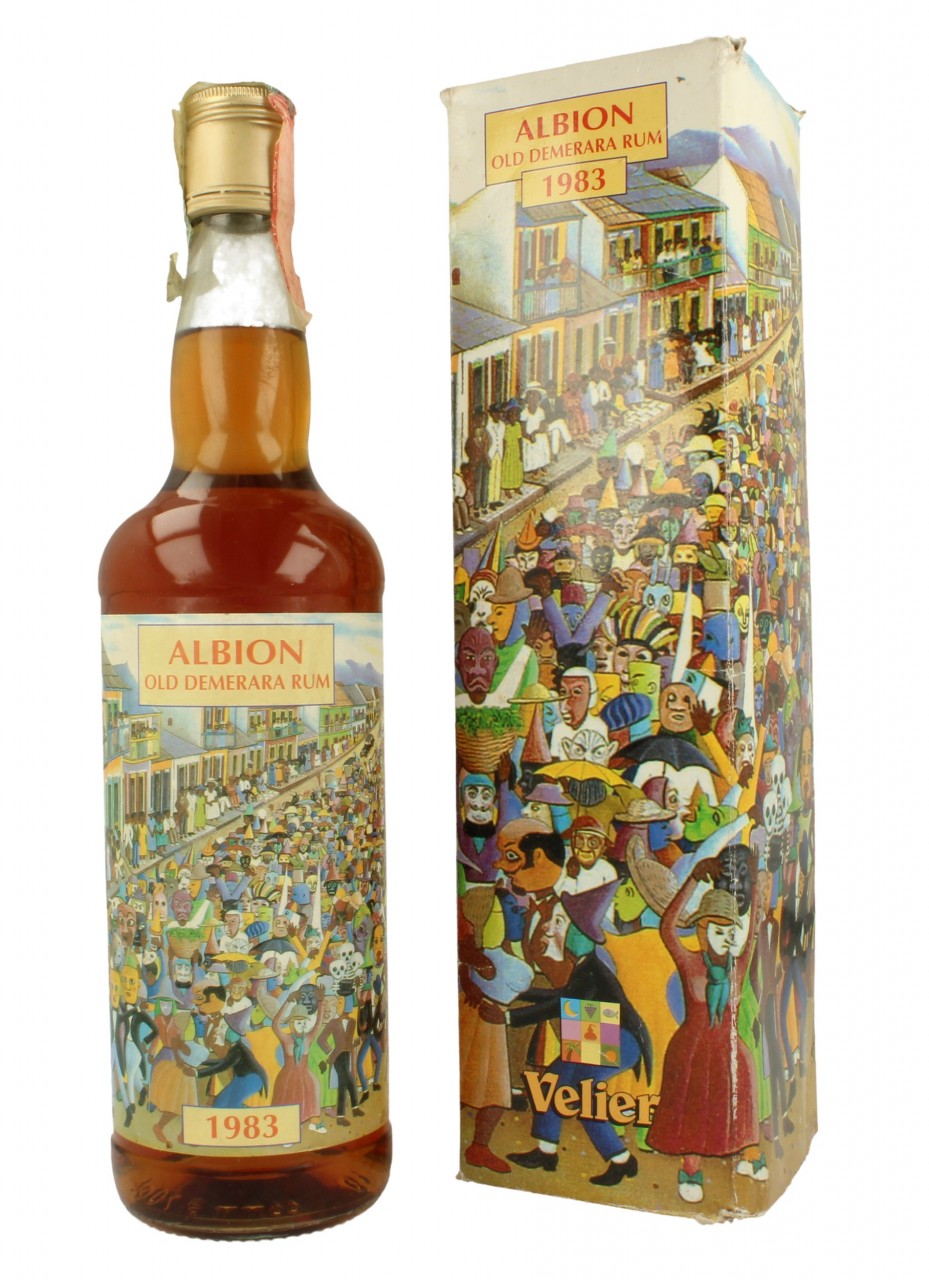
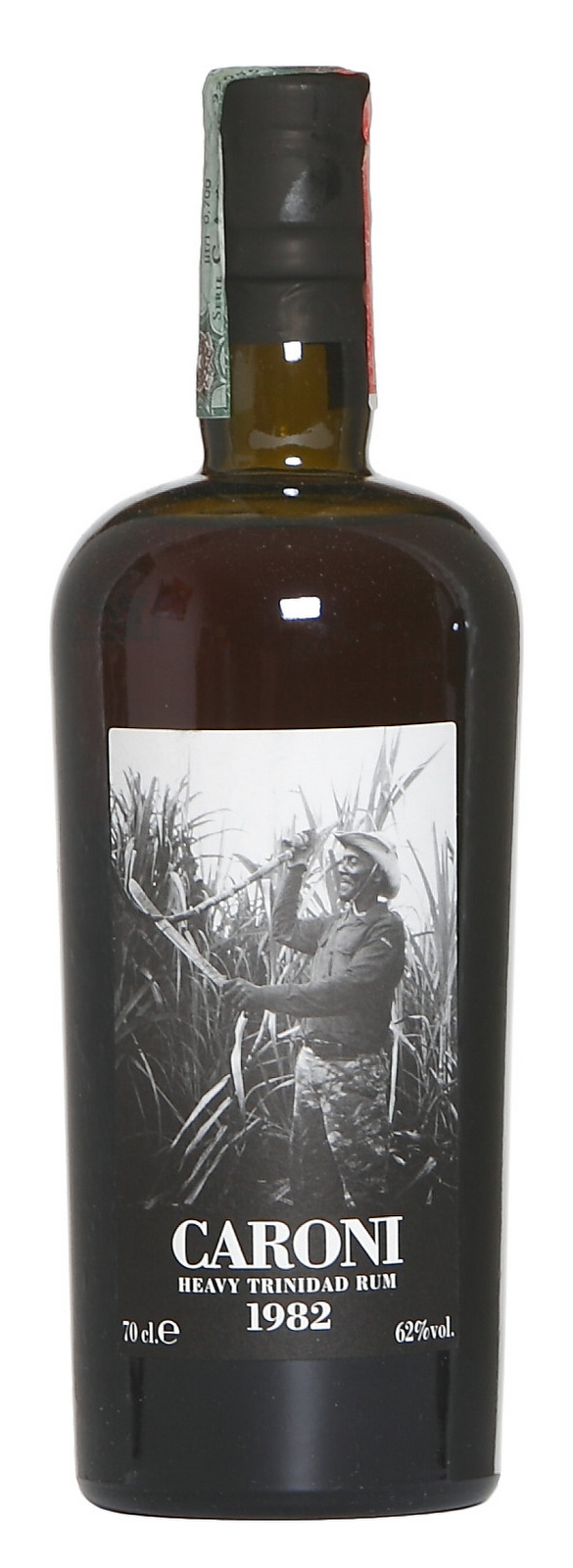 Rumaniacs Review #065 | 0471
Rumaniacs Review #065 | 0471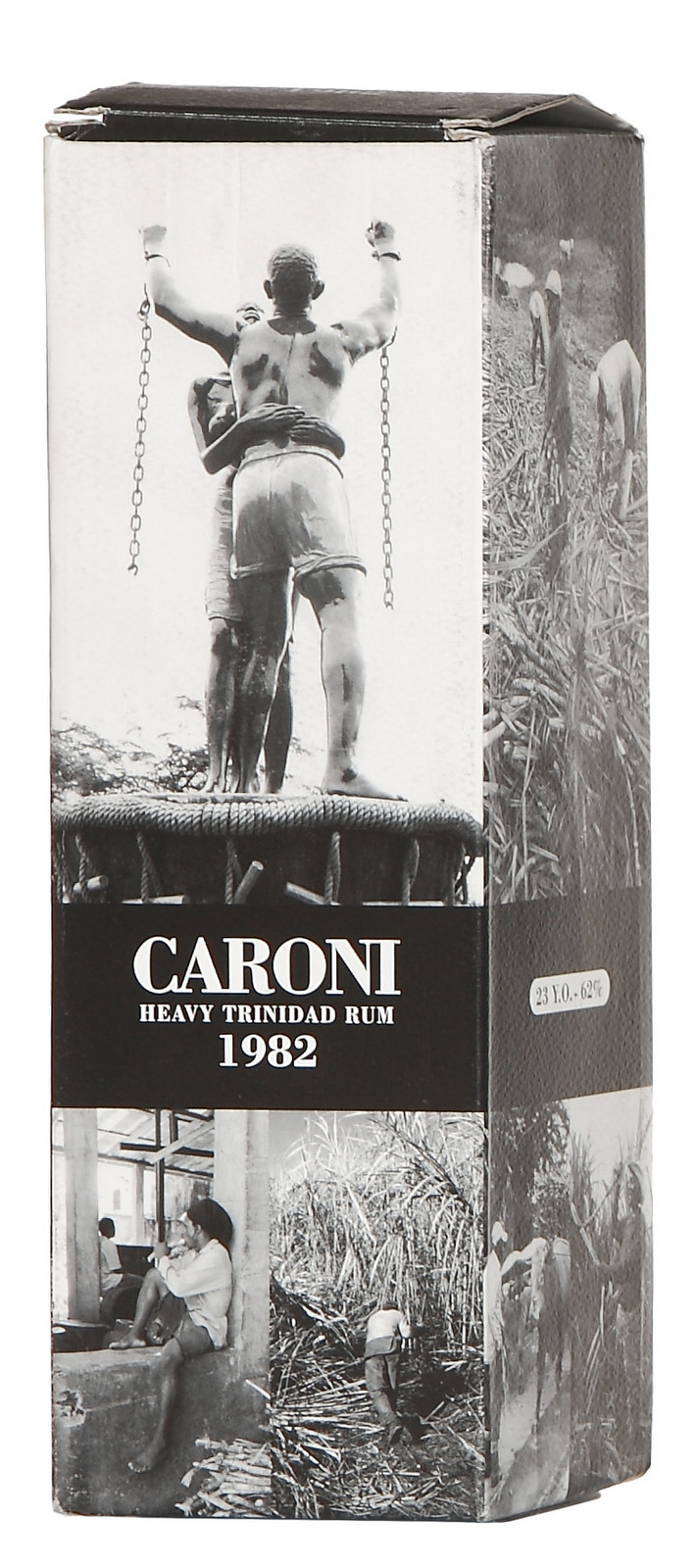
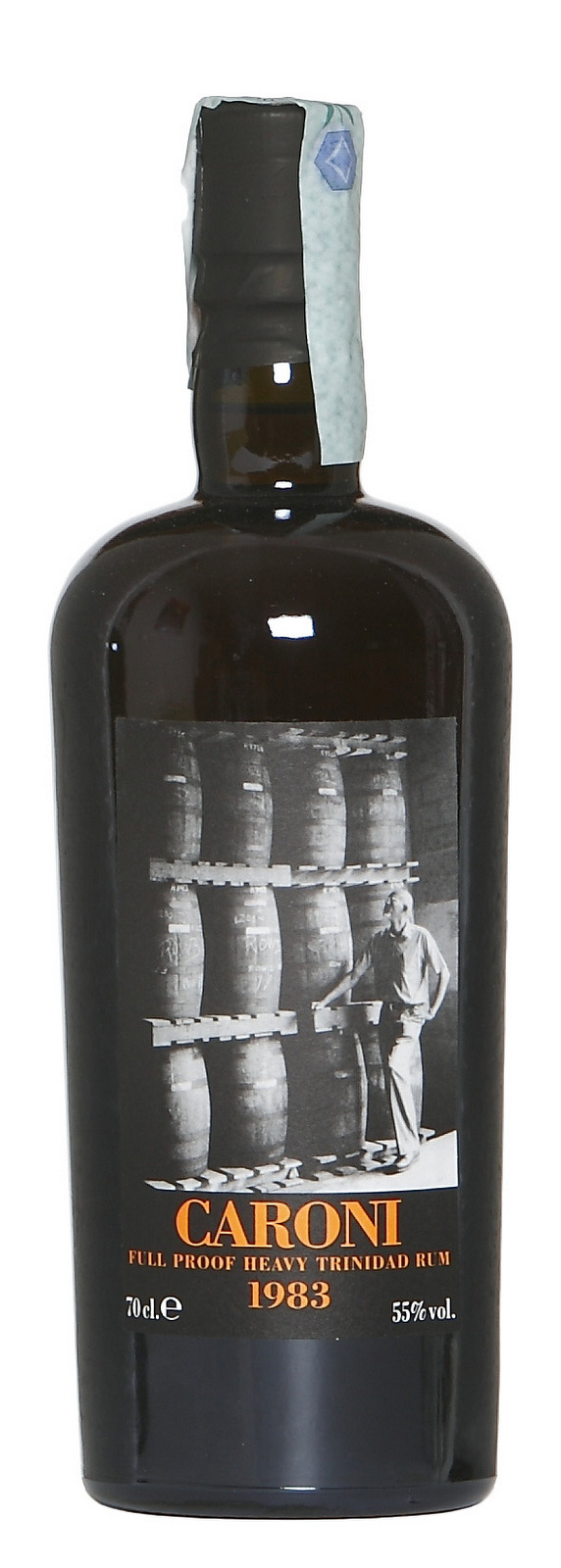
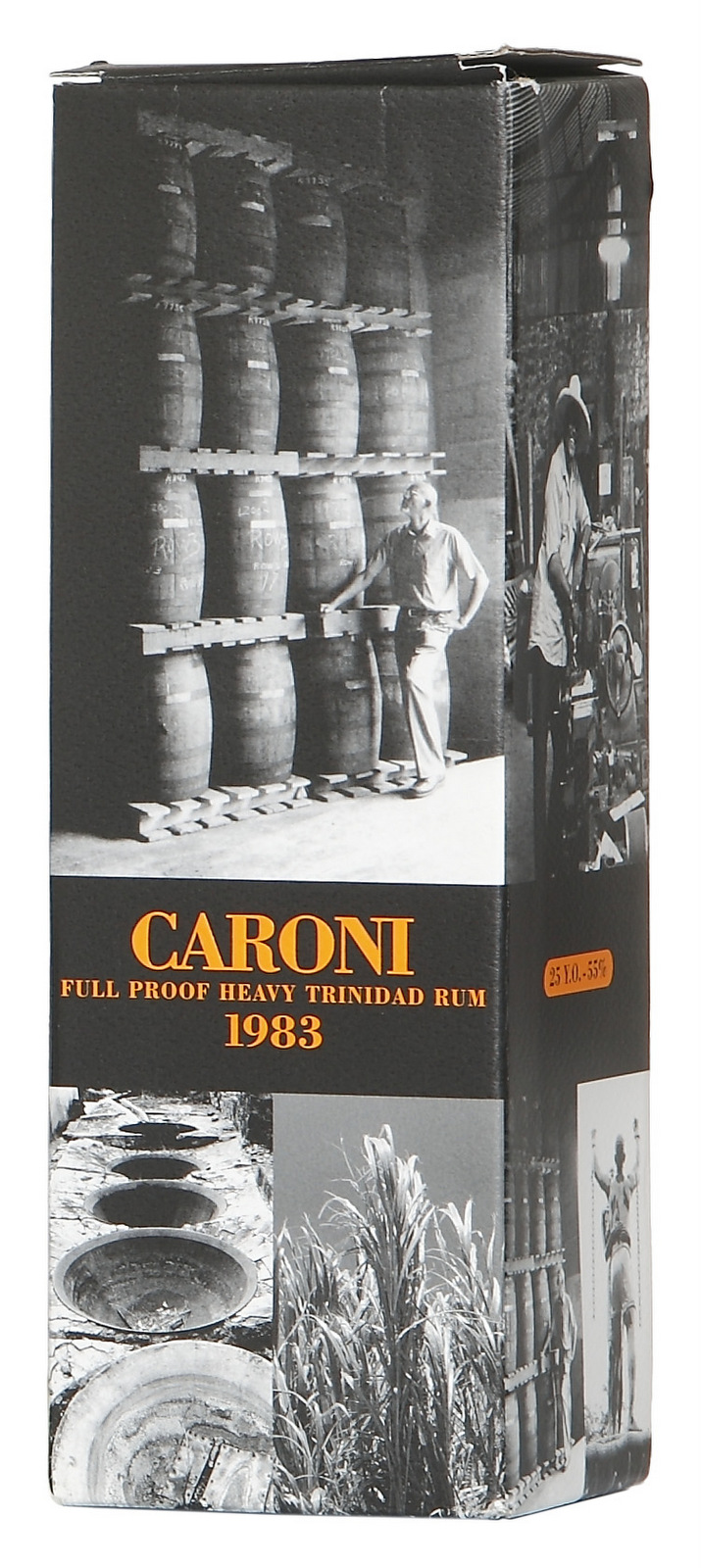
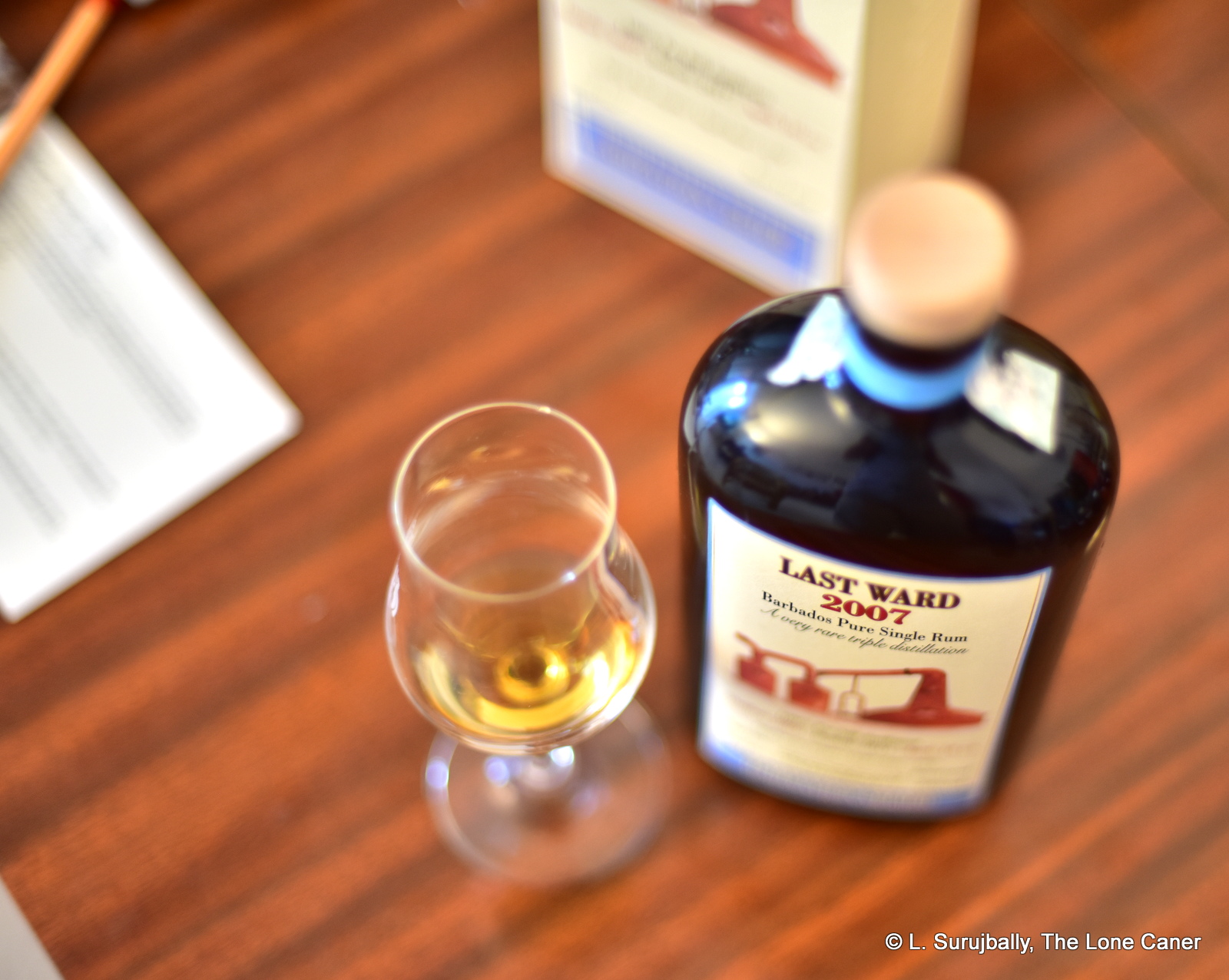
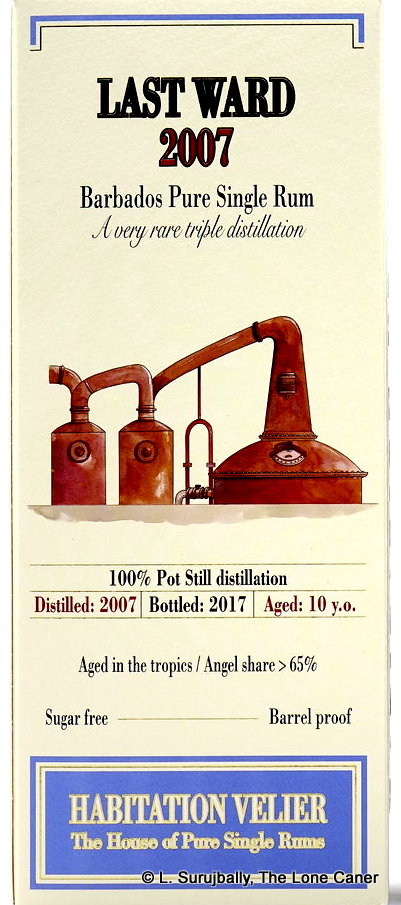 Did all that history and age and heritage translate into a rum worth drinking? It’s not always the case, of course, but here the answer is a firm yes. It started with the nose, where the very first word of my notes is “Wow.” It was smooth and heated, handling the 59% ABV quite well, smelling of furniture polish, leather, light flowers, bags of white chocolate, nougat, toblerone, coffee grounds and salt caramel. It was aromatic enough to make me think of a warmer, softer
Did all that history and age and heritage translate into a rum worth drinking? It’s not always the case, of course, but here the answer is a firm yes. It started with the nose, where the very first word of my notes is “Wow.” It was smooth and heated, handling the 59% ABV quite well, smelling of furniture polish, leather, light flowers, bags of white chocolate, nougat, toblerone, coffee grounds and salt caramel. It was aromatic enough to make me think of a warmer, softer 
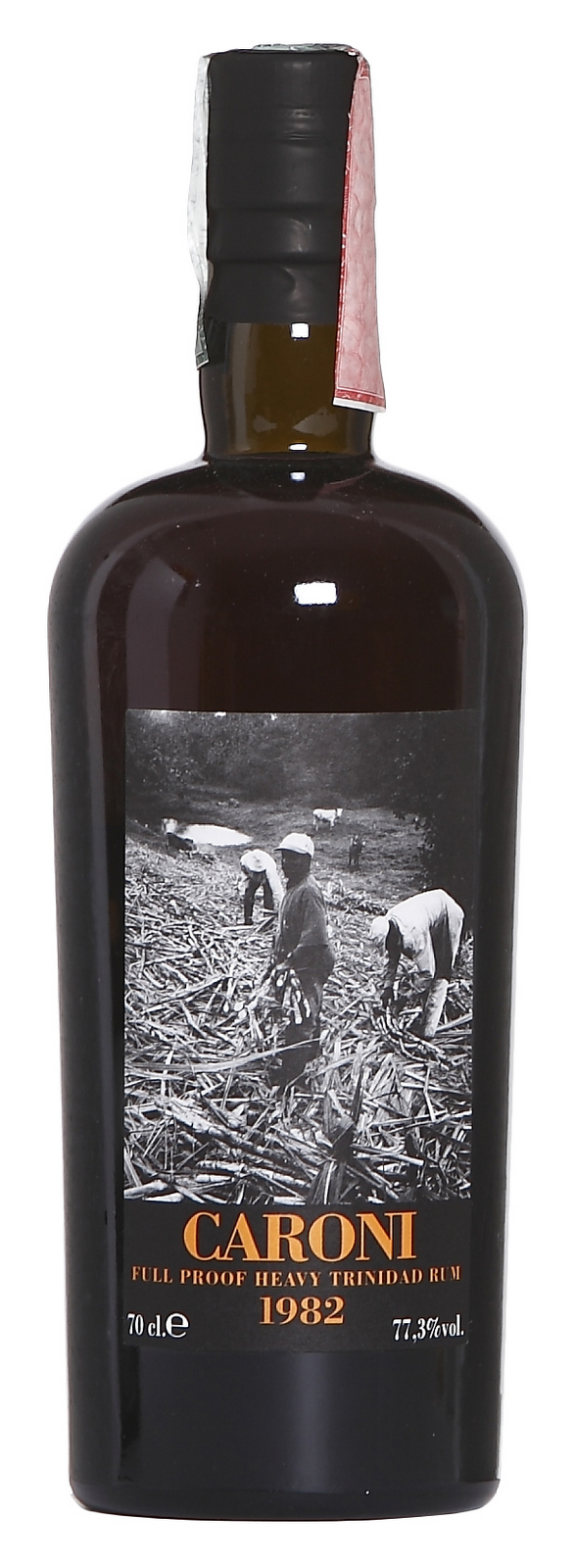
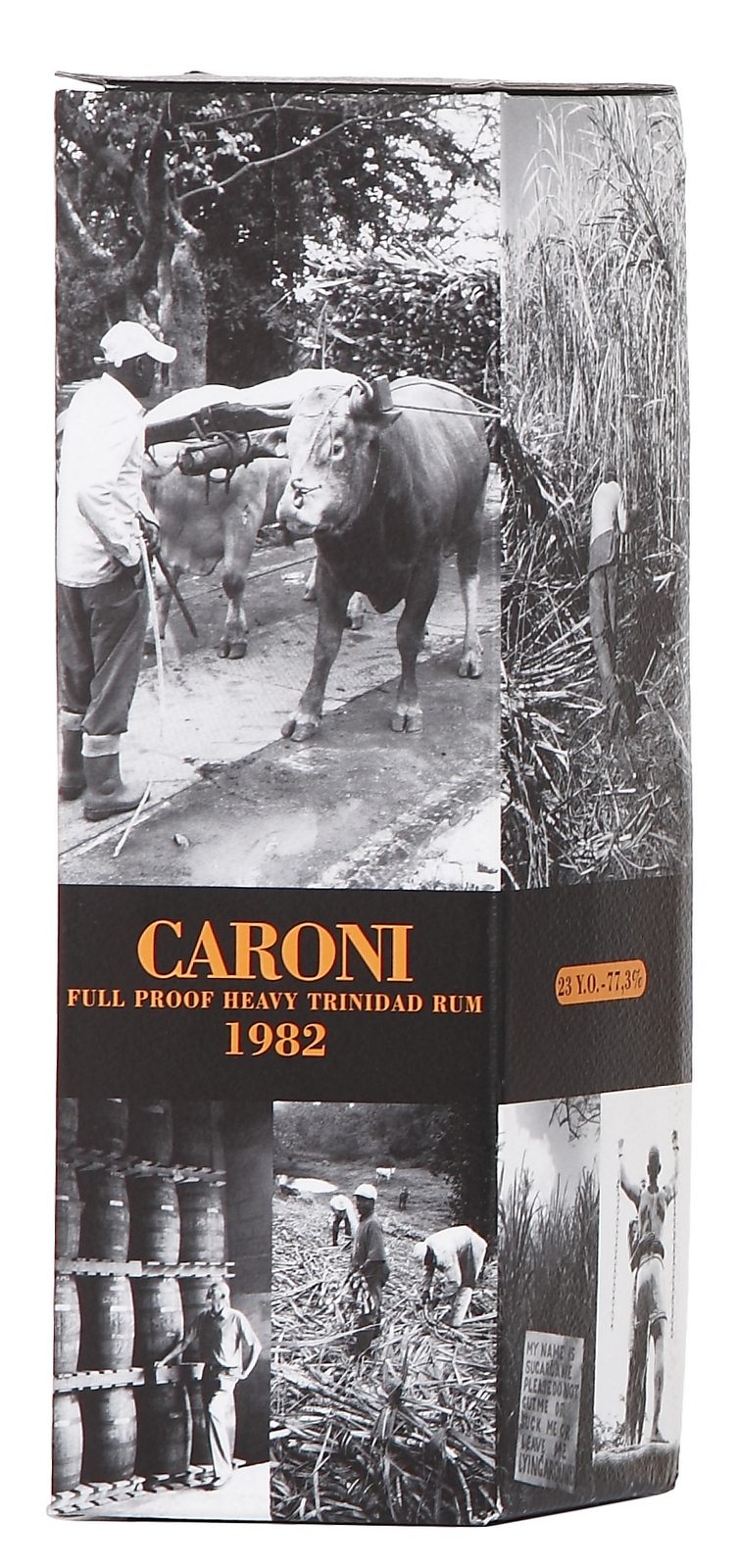
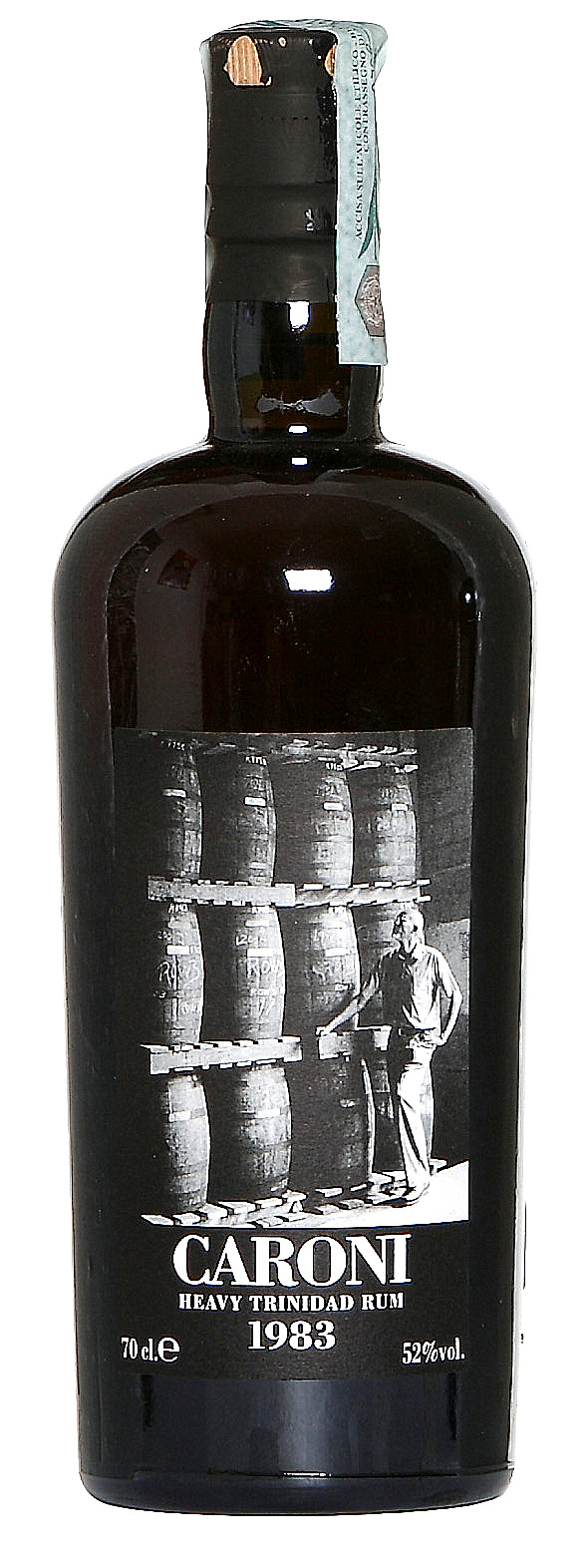 Rumaniacs Review #062 | 0465
Rumaniacs Review #062 | 0465